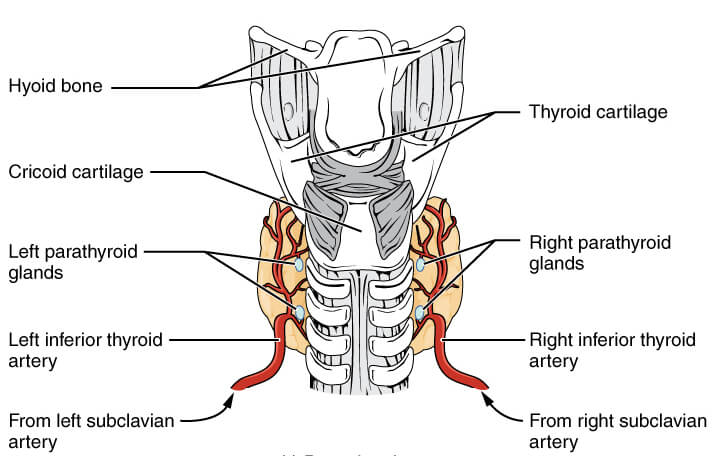 What is Thyroid Cancer?
What is Thyroid Cancer?
The Thyroid is a butterfly-shaped gland that is situated in the front of the neck.
It is the thyroid’s job is to produce certain hormones to help with the different functions of the body. These include Triiodothyronine (T3), Thyroxine (T4) and Calcitonin.
T3 and T4 hormones are used to regulate the bodies metabolic rate, for example in controlling the rate in which calories are burnt. The Calcitonin hormone is used to control calcium levels in the blood.
There are four main types of Thyroid cancer, which are:-
- Papillary Carcinoma – This is the most common form and accounts for around 6 out of 10 cases.
- Follicular Carcinoma – This form accounts for around 15% of cases and occurs most often in older patients.
- Medullary Thyroid Carcinoma – A more hereditary form of Thyroid cancer that accounts for around 5-8% of cases.
- Anaplastic Thyroid Carcinoma – This is the rarest form and accounts for around 1 in 20 cases and usually occurs in those over the age of 60.
Although Thyroid is a less common form of cancer, there are still some 2,700 new cases each year in the UK and over 62,000 new cases in the U.S. In fact, Thyroid cancer cases have been rapidly increasing in the U.S in recent years.
Approximately 2% of cases will occur in children and teens.
What Are the Signs and Symptoms of Thyroid Cancer?
Please note that just because you may have one or more of the symptoms below, does not mean you have Thyroid cancer. Lumps in the neck are often non-cancerous and benign.
Always contact a medical professional as soon as possible for a diagnosis.
- A lump or swelling below the Adam’s apple
- Pain in the neck
- A sore throat
- Hoarseness or changes in your voice
- Trouble breathing
- Difficulty swallowing
- A persistent cough
- Enlarged lymph nodes in the neck
Causes and Risk Factors for Thyroid Cancer
- Gender – For reasons that are not quite known, thyroid cancer occurs three times more often in women than it does in men.
- Age – Thyroid cancer commonly occurs in women in their 40s and 50s. For men, it is more common in those in their 60s and 70s.
- A Diet Low in Iodine – It is thought that those who have a low iodine intake are more likely to get the disease.
- Exposure to Radiation – This is another risk factor for this form of cancer and can often be the result of radiation from certain medical treatments and scans such as x-rays and CT scans.
- Hereditary Conditions – Certain forms of Thyroid cancer such as Medullary Thyroid Cancer can be attributed to the inheritance of a faulty gene.
- Family History – Having a first-degree relative with thyroid cancer may increase the risk of getting Thyroid cancer.
- Weight – Obesity and a lack of exercise are also thought to be risk factors.
5 Year Survival Rates
The figures below should only be used as a guide. Different patients will respond differently to both conventional and complementary forms of treatment.
As is the case with any type of cancer, the sooner that it is discovered and treated, the better the outlook is for the patient.
Papillary Thyroid Cancer
Stage 1 – almost 100%
Stage 2 – almost 100%
Stage 3 – 93%
Stage 4 – 51%
Follicular Thyroid Cancer
Stage 1 – almost 100%
Stage 2 – almost 100%
Stage 3 – 71%
Stage 4 – 50%
Medullary Thyroid Cancer
Stage 1 – almost 100%
Stage 2 – 98%
Stage 3 – 81%
Stage 4 – 28%
Recommended Treatment for Thyroid Cancer
For further information on our available treatments, please see our recommended thyroid cancer treatment page.
